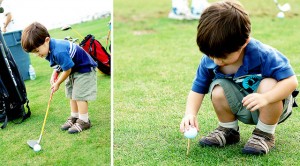 Working with children, I became a Harry Potter fan out of both necessity and real appreciation. J.K. Rowlings’ world of wizards and magic is a fantasy, but the themes of these books are human and real. Among the most frightening characters in Rowlings’ epic struggles of power and control, good vs. evil, are the Death Eaters and the Dementors.
Working with children, I became a Harry Potter fan out of both necessity and real appreciation. J.K. Rowlings’ world of wizards and magic is a fantasy, but the themes of these books are human and real. Among the most frightening characters in Rowlings’ epic struggles of power and control, good vs. evil, are the Death Eaters and the Dementors.
The Death Eaters are those in the wizard world who have made a pledge to support Lord Voldemort, whose vision of total domination rather than peaceful co-existence has been distorted by his hate and rage, and obsession with destroying Harry Potter. The Dementors are the terrifying, soul-sucking wraiths who feed on fear. What a relief that Death Eaters and Dementors aren’t real and aren’t about us! But Rowlings has created a thought-provoking twist.
By the last book, Harry Potter has discovered that he and Lord Voldemort have much in common. Harry alone must determine whether he is capable of making the necessary sacrifice for the greater good of those who depend on him to be their champion. Harry must defeat the Death Eaters and Dementors by conquering his own fear and rage with selfless love. Harry is not perfect, he has made many mistakes and hurt the ones he cares about, but he has this gift within him waiting to be discovered at the time of ultimate crisis.
What I find compelling about the Harry Potter books is the mirror they hold to our world. In our humanity, we all find ourselves having to figure out how to resolve inevitable conflicts and manage strong negative emotions. Parents and children facing divorce are certainly living through an emotional crisis. The question is, do we let rage and fear drive and perhaps distort our actions, or do we seek another way, one that may ask us to sacrifice power and control for the greater good of those who depend on us to be their champions–our children.
Collaborative Team Practice is an alternative dispute resolution process using interest-based negotiation and problem solving to reach agreements and sustainable resolutions. On the team, allied and neutral professionals provide support and guidance to manage strong negative emotions, suggest creative and equitable financial resolutions, and negotiate safe, developmentally responsive parenting plans. It can be a highly effective way to help families transition respectfully during the crisis of a divorce.
We know Collaborative Team Practice may not be the right choice for all families. However, it is a process that will work for many families. Our belief is that reaching agreements rather than perpetuating conflict is truly the way to be champions for children in the age of Death Eaters and Dementors.
 I just saw the pulse-pounding film Gravity, about American astronauts who are stranded in space following an unexpected catastrophe. This is not a spoiler alert—anyone who has seen a trailer for the movie knows this is going to happen. Without giving anything else away, I want to talk about a theme that runs through this film: when there are no guarantees of safety, but holding on is not an option, how do you find the courage to let go?
If you are facing divorce, this is a question you may feel forced to answer against your will. For many people, divorce is an unexpected, disorienting catastrophe for which they are not prepared. In an instant, the world is spinning out of control. It can feel as if you are staring into the void, rudderless and without an anchor. There is no longer safety in trying to hold onto the past, but what lies ahead feels absolutely uncertain. “I have to let go, but how will I survive?” is a very real question.
“You will make it!” is the answer. And despite how lonely you might feel, you are not alone. There are sources of support that you have never known about, because until now you haven’t had to find them. It is possible to find handholds, but you do need to make some leaps of faith, while acknowledging the reality that there are no absolute guarantees in life.
One source of support is Collaborative Team Practice, an out-of-court divorce option that you may never have heard of before. A Collaborative Team provides calm, experienced and supportive assistance through the crisis, and helps families transform the chaos and anxiety that can accompany a divorce into a safer and clearer road map for the future.
If this sounds like the kind of handhold you have been searching for as you need to let go, please visit our website at www.collaborative law.org. Any of our multidisciplinary team professionals–attorneys, financial neutrals, neutral coaches and neutral child specialists–can provide a free initial consultation to explain the process and inform you of your options. We are here for you, and know that you can find us.
I just saw the pulse-pounding film Gravity, about American astronauts who are stranded in space following an unexpected catastrophe. This is not a spoiler alert—anyone who has seen a trailer for the movie knows this is going to happen. Without giving anything else away, I want to talk about a theme that runs through this film: when there are no guarantees of safety, but holding on is not an option, how do you find the courage to let go?
If you are facing divorce, this is a question you may feel forced to answer against your will. For many people, divorce is an unexpected, disorienting catastrophe for which they are not prepared. In an instant, the world is spinning out of control. It can feel as if you are staring into the void, rudderless and without an anchor. There is no longer safety in trying to hold onto the past, but what lies ahead feels absolutely uncertain. “I have to let go, but how will I survive?” is a very real question.
“You will make it!” is the answer. And despite how lonely you might feel, you are not alone. There are sources of support that you have never known about, because until now you haven’t had to find them. It is possible to find handholds, but you do need to make some leaps of faith, while acknowledging the reality that there are no absolute guarantees in life.
One source of support is Collaborative Team Practice, an out-of-court divorce option that you may never have heard of before. A Collaborative Team provides calm, experienced and supportive assistance through the crisis, and helps families transform the chaos and anxiety that can accompany a divorce into a safer and clearer road map for the future.
If this sounds like the kind of handhold you have been searching for as you need to let go, please visit our website at www.collaborative law.org. Any of our multidisciplinary team professionals–attorneys, financial neutrals, neutral coaches and neutral child specialists–can provide a free initial consultation to explain the process and inform you of your options. We are here for you, and know that you can find us.  I just saw the pulse-pounding film Gravity, about American astronauts who are stranded in space following an unexpected catastrophe. This is not a spoiler alert—anyone who has seen a trailer for the movie knows this is going to happen. Without giving anything else away, I want to talk about a theme that runs through this film: when there are no guarantees of safety, but holding on is not an option, how do you find the courage to let go?
If you are facing divorce, this is a question you may feel forced to answer against your will. For many people, divorce is an unexpected, disorienting catastrophe for which they are not prepared. In an instant, the world is spinning out of control. It can feel as if you are staring into the void, rudderless and without an anchor. There is no longer safety in trying to hold onto the past, but what lies ahead feels absolutely uncertain. “I have to let go, but how will I survive?” is a very real question.
“You will make it!” is the answer. And despite how lonely you might feel, you are not alone. There are sources of support that you have never known about, because until now you haven’t had to find them. It is possible to find handholds, but you do need to make some leaps of faith, while acknowledging the reality that there are no absolute guarantees in life.
One source of support is Collaborative Team Practice, an out-of-court divorce option that you may never have heard of before. A Collaborative Team provides calm, experienced and supportive assistance through the crisis, and helps families transform the chaos and anxiety that can accompany a divorce into a safer and clearer road map for the future.
If this sounds like the kind of handhold you have been searching for as you need to let go, please visit our website at www.collaborative law.org. Any of our multidisciplinary team professionals–attorneys, financial neutrals, neutral coaches and neutral child specialists–can provide a free initial consultation to explain the process and inform you of your options. We are here for you, and know that you can find us.
I just saw the pulse-pounding film Gravity, about American astronauts who are stranded in space following an unexpected catastrophe. This is not a spoiler alert—anyone who has seen a trailer for the movie knows this is going to happen. Without giving anything else away, I want to talk about a theme that runs through this film: when there are no guarantees of safety, but holding on is not an option, how do you find the courage to let go?
If you are facing divorce, this is a question you may feel forced to answer against your will. For many people, divorce is an unexpected, disorienting catastrophe for which they are not prepared. In an instant, the world is spinning out of control. It can feel as if you are staring into the void, rudderless and without an anchor. There is no longer safety in trying to hold onto the past, but what lies ahead feels absolutely uncertain. “I have to let go, but how will I survive?” is a very real question.
“You will make it!” is the answer. And despite how lonely you might feel, you are not alone. There are sources of support that you have never known about, because until now you haven’t had to find them. It is possible to find handholds, but you do need to make some leaps of faith, while acknowledging the reality that there are no absolute guarantees in life.
One source of support is Collaborative Team Practice, an out-of-court divorce option that you may never have heard of before. A Collaborative Team provides calm, experienced and supportive assistance through the crisis, and helps families transform the chaos and anxiety that can accompany a divorce into a safer and clearer road map for the future.
If this sounds like the kind of handhold you have been searching for as you need to let go, please visit our website at www.collaborative law.org. Any of our multidisciplinary team professionals–attorneys, financial neutrals, neutral coaches and neutral child specialists–can provide a free initial consultation to explain the process and inform you of your options. We are here for you, and know that you can find us. 

 Working with children, I became a Harry Potter fan out of both necessity and real appreciation. J.K. Rowlings’ world of wizards and magic is a fantasy, but the themes of these books are human and real. Among the most frightening characters in Rowlings’ epic struggles of power and control, good vs. evil, are the Death Eaters and the Dementors.
Working with children, I became a Harry Potter fan out of both necessity and real appreciation. J.K. Rowlings’ world of wizards and magic is a fantasy, but the themes of these books are human and real. Among the most frightening characters in Rowlings’ epic struggles of power and control, good vs. evil, are the Death Eaters and the Dementors.


